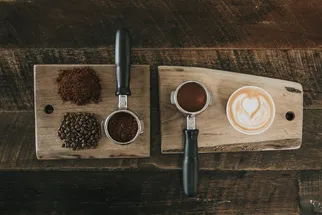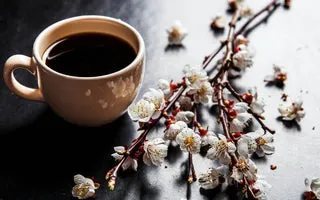America’s Love for Coffee
Coffee is more than just a drink in America – it’s a culture, a lifestyle, and a booming industry. From morning routines to social gatherings, coffee plays a crucial role in daily life. But how does the U.S. coffee culture compare to the rest of the world? Let’s dive into the unique habits, preferences, and trends that set American culture apart.

1. The Coffee Industry in America
- A Billion-Dollar Market: The U.S. market is valued at over $100 billion, making it one of the largest in the world. Coffee sales continue to rise each year, driven by evolving consumer preferences and the growing demand for specialty. The U.S. industry supports millions of jobs, including farmers, baristas, roasters, and suppliers.
- Coffee Chains Dominate: Major brands like Starbucks, Dunkin’, and Peet’s have expanded globally, influencing culture worldwide. These chains have introduced innovative flavors, seasonal drinks, and loyalty programs to keep customers engaged. Drive-thru services and mobile ordering apps have also revolutionized how Americans buy.
- Independent Cafés Thrive: Despite the dominance of big chains, small shops and independent roasters are flourishing. These cafés offer unique blends, locally sourced ingredients, and personalized customer experiences. Many independent roasters focus on sustainability, fair trade sourcing, and artisanal brewing methods to differentiate themselves from larger competitors.

2. American Coffee Consumption Habits
- Daily Coffee Rituals: Over 60% of Americans drink daily, with an average of 3 cups per person. Consumption starts early in the morning and continues throughout the day, often replacing traditional afternoon tea in other cultures.
- On-the-Go Culture: Unlike in European countries where is savored slowly, Americans often drink while commuting, working, or running errands. The convenience factor has led to the rise of travel mugs, drive-thru shops, and ready-to-drink bottled options.
- Iced Coffee Love: Cold brews, frappuccinos, and iced lattes are more popular in the U.S. compared to other nations. The popularity of iced has led to an explosion of flavors, including mocha, hazelnut, and seasonal pumpkin spice options. Many consumers prefer iced even in winter, proving it is more than just a seasonal trend.
3. How Americans Like Their Coffee
- Bigger is Better: Unlike Italy’s tiny espresso shots, Americans love their in large sizes. Shops offer sizes up to 32 ounces, with many customers choosing larger portions for value and convenience.
- Flavored & Sweetened: While many cultures enjoy black, Americans prefer sweetened versions with caramel, vanilla, chocolate, and pumpkin spice flavors. The addition of whipped cream, flavored syrups, and extra sugar makes American coffee more dessert-like compared to traditional European or Asian styles.
- Custom Orders: The rise of personalized orders (extra foam, oat milk, double shot, sugar-free syrups, etc.) is uniquely American. Customization is encouraged in U.S. shops, allowing customers to modify nearly every aspect of their drink to fit dietary needs and personal taste preferences.

4. How America Compares to Other Coffee-Loving Nations
- Italy: Espresso is the go-to choice; cappuccinos are only for mornings, and ordering one after lunch is considered unusual.
- France: Café culture encourages people to sit, relax, and sip slowly, often accompanied by a pastry.
- Brazil: is deeply ingrained in social gatherings, often enjoyed in small, strong cups called “cafezinho.”
- Japan: Convenience store is popular, but so are high-end specialty shops known for precision brewing techniques.
- Ethiopia: The birthplace , where elaborate ceremonies involve roasting, brewing, and serving over an extended period.
5. The Rise of Specialty Coffee in America
- Third-Wave Coffee Movement: A growing interest in high-quality, ethically sourced has led to a shift from mass-produced blends to artisan-crafted brews.
- Single-Origin Beans: Consumers are now interested in where their comes from and how it’s processed, with many preferring beans sourced from a single region for their distinct flavors.
- Pour-Over & Chemex: Manual brewing methods are making a comeback for a richer flavor experience. Methods such as AeroPress, siphon brewing, and French press are also gaining popularity among connoisseurs.

6. The Social & Cultural Impact of Coffee in the U.S.
- Work & Productivity: Coffee is essential in office culture; many workplaces offer free to employees to boost productivity. Breaks have become an integral part of the workday, encouraging socialization and brainstorming sessions.
- Networking & Meetings: Business deals and casual meetings often happen over a cup. The shop has become an alternative workspace for freelancers, remote workers, and entrepreneurs.
- Digital Age Influence: Coffee selfies, café aesthetics, and influencer endorsements play a big role in social media trends. Culture is prominently featured on Instagram, TikTok, and YouTube, with millions of users sharing their favorite drinks and café experiences.
7. The Future of American Coffee Culture
- Sustainable Practices: More consumers are choosing fair trade and organic , pushing brands to adopt eco-friendly practices. Companies are investing in recyclable cups, biodegradable straws, and sustainable farming practices.
- Plant-Based Trends: Oat milk, almond milk, and other dairy-free alternatives are in demand, catering to vegan and lactose-intolerant consumers.
- Tech & Innovation: Smart makers, app-based ordering, and AI-driven recommendations are shaping the industry. Advances in technology, including precision grinders and automated espresso machines, are enhancing the quality and convenience at home and in cafes.
Conclusion: America’s Coffee Identity
American culture is fast-paced, innovative, and deeply integrated into daily life. While it differs from traditional coffee-drinking nations, it has created its own unique identity, influencing trends worldwide. Whether you prefer a classic black , a caramel frappuccino, or a sustainably sourced pour-over, one thing is certain – America loves its coffee!
The Vegan Boom: How Plant-Based Diets Are Taking Over the USA in 2025!






